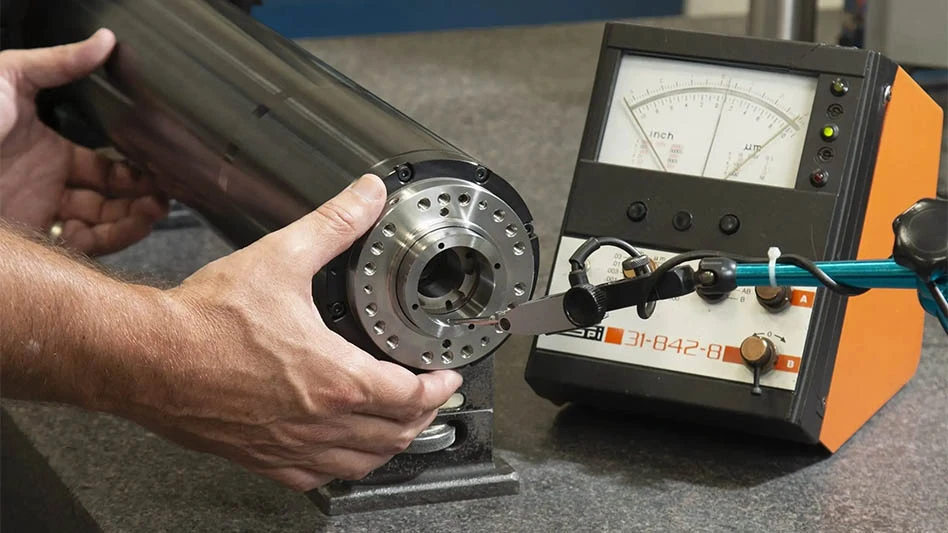Aerospace Dynamics International (ADI) will increase its titanium machining capacity approximately 40% to support Airbus A350 and Boeing 787 programs with a $90 million investment that includes a new 120,000ft2 facility and acquisition of eight 5 spindle, 5-axis MAG XTi profilers. Upon completion, the expansion will give ADI approximately 600,000ft2 under roof, and require more than 200 new employees to fully staff the operation.
 The new 5-axis gantry design uses the same high-stiffness frame as the 3-axis XTi, which set a titanium metal removal record of 90in3+ per minute in runoff for Aerospace Dynamics International.
The new 5-axis gantry design uses the same high-stiffness frame as the 3-axis XTi, which set a titanium metal removal record of 90in3+ per minute in runoff for Aerospace Dynamics International.
“The 3-axis version of this machine really proved itself, and the new 5-axis version builds on this platform,” says John Cave, president and CEO, ADI. “This is a major breakthrough in gantry design that gives us capabilities we never had before. Setup will be easier and accuracy will be on par with the 3-axis design. The rotary axes on each spindle can be independently calibrated and controlled to enhance accuracy and simplify setup. And for 3-axis roughing operations, the rotary axes can be automatically locked for additional control over the final machining setup.”
The 40 spindles will be carried on eight individually controlled gantries, with four gantries each mounted on two pairs of 91.4m (300ft) X-axis rails. The gantries span a 6m (20ft) Y-axis, with a Z-axis depth of 711mm (28”). The work envelope between each pair of rails will total 1,300m2 (14,000ft2). Each spindle’s angular A and B axes can travel ±30°, with accuracy ensured by digital scale feedback. For ADI’s application, the machines are equipped with 52kW (70hp), 7,000rpm spindles, and each spindle can deliver up to 1,345nm (986ft/lb) of torque into the cut at 40rpm to 7,000rpm. The standard XTi spindle is normally rated 51kW (68hp), 3,500rpm, and produces 2,523nm (1860ft/lb) torque.
“A multispindle machine that can rough and finish titanium at this rate gives us a real competitive edge,” Cave explains. “A single-spindle machine runs at roughly the same speeds and feeds, yet our machines complete five parts in the same cycle time, so we are much more efficient than we could be with individual machines. In addition, our infrastructure overhead is reduced, compared to what we would need for 40 discrete machines on the floor.”
Latest from Aerospace Manufacturing and Design
- 256-piece general maintenance tool kit
- JetZero all-wing airplane demonstrator achieves milestones
- Cermet indexable inserts for medium turning operations
- Trelleborg acquires Aero-Plastics
- Industrial automation products, enclosed encoders
- #61 - Manufacturing Matters: CMMC roll out: When do I need to comply?
- AIX shows aircraft interiors are a strategic priority for global airlines
- Machine Tool Builders Roundtable: Turn equipment into expertise





